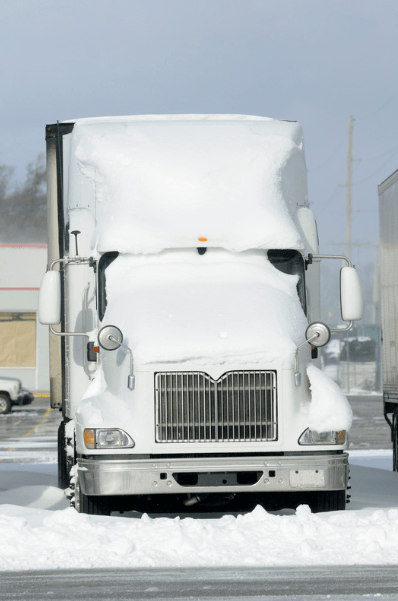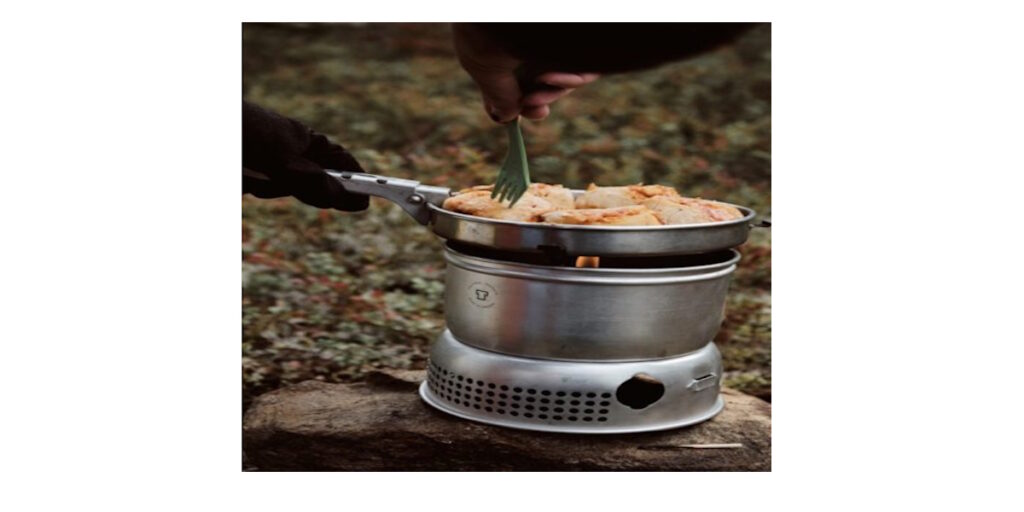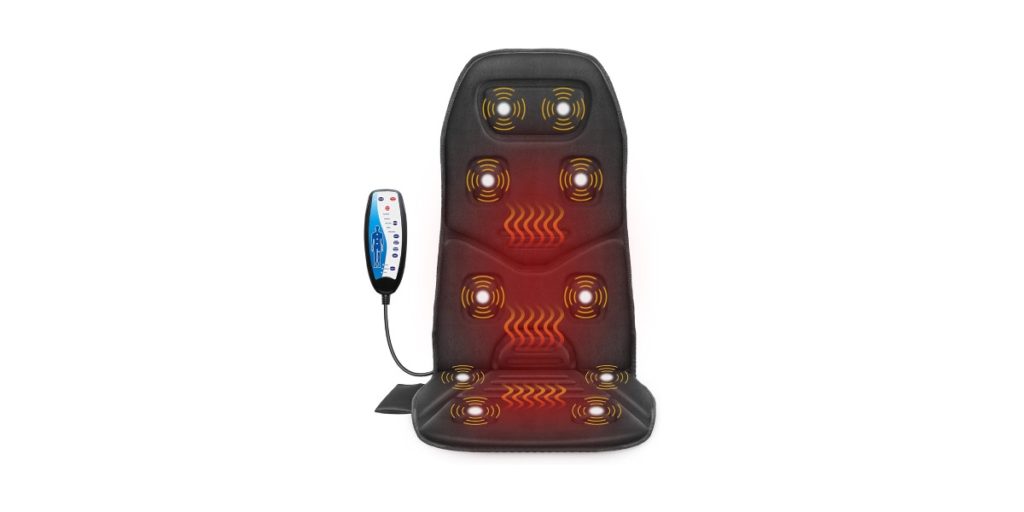Understanding the Challenges of Winter Driving

Winter driving poses unique challenges for truckers, requiring them to navigate through treacherous conditions and adapt their driving techniques accordingly. One of the primary challenges is the presence of adverse weather conditions, such as snowstorms, freezing rain, and strong winds. These weather conditions can significantly impact visibility on the road, making it difficult for truckers to anticipate potential hazards or obstacles ahead.
Reduced visibility not only increases the risk of accidents but also places a heavier reliance on windshield wipers that need to be in optimal condition to ensure clear visibility. Regularly checking and replacing windshield wipers as part of a pre-trip inspection checklist can help mitigate this challenge.
Apart from reduced visibility caused by weather conditions, winter driving also demands proper vehicle maintenance and inspection. Ensuring that the truck is in optimal working condition before embarking on a journey is essential for a safe winter drive.
This includes checking critical components such as brakes, lights, battery strength, and defrosting capabilities. Additionally, regularly monitoring tire pressure and tread depth is crucial to maintain traction on slippery roads.
Well-maintained tires with adequate tread depth allow for better grip on icy surfaces. Truckers should consider investing in all-weather or winter-specific tires designed to provide enhanced traction in cold weather conditions.
To stay informed about changing weather patterns while on the road, truckers can utilize various tools such as portable weather radios or smartphone apps dedicated to tracking weather forecasts. Equipping oneself with real-time weather information allows drivers to plan their routes accordingly and make informed decisions regarding road safety.
Moreover, having an emergency kit within reach is imperative during winter driving situations where unexpected breakdowns or accidents may occur due to harsh weather conditions or poor road maintenance by snowplows. Preparing an emergency kit stocked with essentials like warm clothing, non-perishable food items, water bottles, flashlight with extra batteries will prove invaluable if faced with unforeseen circumstances during winter drives.
Understanding these challenges associated with winter driving is the first step towards ensuring safety on the road. By taking proactive measures such as maintaining proper vehicle conditions, monitoring weather conditions, and being prepared for emergencies, truckers can navigate through winter terrains with confidence and reduce the risks associated with adverse weather conditions.
Adverse Weather Conditions and Reduced Visibility
Winter driving for truckers presents unique challenges due to adverse weather conditions and reduced visibility. As temperatures drop, the roads become susceptible to snow, ice, and freezing rain, making them treacherous to navigate. These hazardous conditions demand heightened caution and preparedness from truck drivers.
One of the main concerns during winter driving is reduced visibility caused by heavy snowfall, fog, or blowing snow. Limited visibility significantly increases the risk of accidents as it becomes difficult to see other vehicles on the road or anticipate potential hazards ahead.

To combat this challenge, truckers should ensure their vehicles are equipped with properly functioning windshield wipers designed specifically for winter weather conditions. Regularly inspecting wipers and replacing them when necessary is crucial in maintaining clear visibility on the road.
In addition to windshield wipers, utilizing a weather app or a weather radio can provide invaluable real-time updates on changing weather patterns and severe road conditions. Staying informed about approaching storms or blizzards enables truckers to plan their routes accordingly and take appropriate precautions.
When encountering reduced visibility due to snow or fog while on the road, it is essential for truckers to reduce their speed, increase following distance from other vehicles, and use caution when changing lanes or overtaking other vehicles. By doing so, they can mitigate the risks associated with diminished sightlines caused by adverse weather conditions.
Moreover, as part of their regular inspection checklist during winter months, truck drivers should pay special attention to their tires’ condition and traction control systems. Ensuring proper tire maintenance by regularly checking tire pressure and tread depth prevents skidding or loss of control in slippery conditions.
Equipping trucks with winter tires designed for enhanced grip on icy surfaces further improves traction capabilities. By acknowledging the impact of adverse weather conditions on reducing visibility while driving during winter months and taking appropriate measures such as maintaining functional windshield wipers, staying informed through weather apps or radios alongside adhering to safe driving practices in reduced visibility, truckers can effectively navigate through challenging winter weather and prioritize their safety on the road.
Proper Vehicle Maintenance and Inspection
To ensure safe winter driving, truckers must prioritize proper vehicle maintenance and inspection. This involves thorough checks of essential components such as tires, brakes, lights, windshield wipers, and the heating system.

Firstly, paying close attention to the condition of tires is crucial. Truckers should inspect tire tread depth regularly to ensure adequate traction on snowy or icy roads.
Worn-out tires can increase the risk of skidding or losing control of the vehicle. Additionally, it is vital to monitor tire pressure as cold temperatures can cause it to drop significantly.
Furthermore, truckers should consider investing in winter-specific tires designed for improved grip in low temperatures and adverse weather conditions. These specialized tires are often made with softer rubber compounds that maintain flexibility even in freezing temperatures.
Alongside proper tire maintenance, ensuring that brakes are functioning optimally is equally important for winter driving safety. Truckers should inspect the brake pads and rotors regularly and address any signs of wear or damage promptly.
Adequate brake performance is essential for maintaining control on slippery roads and preventing accidents. In addition to tire and brake maintenance, truckers must also pay attention to other crucial components when conducting regular inspections.
Windshield wipers play a vital role in maintaining visibility during snowfall or sleet showers. Checking their condition regularly and replacing them if needed ensures clear visibility through the windshield at all times.
Additionally, ensuring that all lights are working properly—headlights, taillights, turn signals—is crucial for both driver safety and other motorists’ awareness on the road. To make these inspections more organized and efficient, truckers can benefit from using an inspection checklist specifically designed for winter driving conditions.
This checklist can include all necessary items to be checked before embarking on a journey during winter months such as tire tread depth measurement using a gauge; checking windshield wipers for wear or damage; inspecting headlights for brightness; testing taillights functionality; and verifying the functioning of turn signals. By adhering to a comprehensive inspection checklist, truckers can maintain their vehicles in excellent condition and reduce the chances of encountering mechanical issues or accidents during winter driving.
Overall, prioritizing proper vehicle maintenance and conducting regular inspections is paramount for truckers to stay safe on winter roads. By ensuring tire condition, brake performance, windshield wiper functionality, and overall vehicle health, truckers can better navigate the challenges posed by adverse weather conditions.
Implementing an inspection checklist can serve as a helpful tool in maintaining organized and thorough inspections before embarking on winter journeys. Through this meticulous approach to vehicle maintenance and inspection, truckers can minimize risks and enhance safety on the wintry roads they encounter.
Tire Maintenance and Traction Control
When it comes to winter driving for truckers, proper tire maintenance and traction control are of paramount importance. The condition of your tires plays a vital role in maintaining grip on snowy and icy roads, ensuring the safety of both the driver and other road users.
Before setting out on a winter journey, take some time to inspect your tires thoroughly. Start by checking the tire pressure using a gauge as cold temperatures can cause pressure fluctuations.
Refer to your vehicle’s manual or the recommended pressure guidelines provided by the tire manufacturer to ensure optimal inflation. Next, examine the tire tread depth as it greatly affects traction on slick surfaces.

In winter months, it is advisable to have at least 6/32 inches of tread depth for better grip. To measure this accurately, you can use a tread depth gauge or rely on wear indicators present within the grooves of most modern tires.
If you notice that your tires’ tread is worn down beyond recommended levels or if they exhibit signs of uneven wear patterns, replacing them with new ones is essential for safe winter driving. Furthermore, consider switching to winter-specific tires designed specifically for challenging weather conditions.
These types of tires are crafted with specialized rubber compounds that remain pliable in colder temperatures, ensuring enhanced traction and improved handling on snow-covered roads. Unlike all-season tires that may harden in low temperatures leading to reduced grip performance, winter tires maintain flexibility even when faced with extreme coldness.
Additionally, their unique tread patterns are designed to provide excellent snow dispersal and bite into icy surfaces effectively. To further enhance traction control during wintery conditions, explore options such as investing in snow chains or utilizing studded tires where legally permitted.
Snow chains provide additional grip by wrapping around the tire treads and digging into compacted snow or ice-covered roads effectively. Studded tires feature metal studs embedded within their rubber surface that enhance traction by biting into icy surfaces like miniature ice picks.
However, it’s important to note that studded tires may not be suitable for all road conditions and can cause damage on roads free of ice or snow. By giving diligent attention to tire maintenance and exploring options like winter-specific tires or traction-enhancing devices, truckers can significantly improve their vehicle’s grip on winter roads.
These measures provide an added level of safety, helping to prevent accidents while ensuring smooth and controlled driving even in the harshest winter conditions. Remember, your tires are the only points of contact between your vehicle and the road surface, so investing time in their upkeep is crucial for a successful and safe winter journey.
Safe Speed and Following Distance
When it comes to winter driving, maintaining a safe speed is crucial in order to prevent accidents and maintain control of your truck.
The slippery road conditions during winter can greatly impact the stopping distance of your vehicle. It is essential to reduce your speed and drive at a pace that is appropriate for the current conditions.
Keep in mind that the posted speed limits are meant for ideal weather conditions, so be prepared to adjust accordingly. In addition to reducing your speed, maintaining an adequate following distance is equally important.
The general rule of thumb is to keep at least six seconds of following distance between you and the vehicle ahead. This allows sufficient time for you to react if the driver in front suddenly brakes or encounters an obstacle.
Additionally, by keeping a safe following distance, you minimize the risk of rear-ending another vehicle if you are unable to stop in time due to slippery roads. To determine if you are maintaining a safe following distance, it can be helpful to use visual markers on the road.
Choose a stationary object such as a signpost or road marker ahead of you and count how many seconds it takes for your truck to reach that point after the vehicle in front passes it. Ideally, this should be around six seconds.
If it takes less time than that, increase your following distance accordingly. Remember that other drivers may not always adhere to safe driving practices during winter weather conditions and may unexpectedly change lanes or brake suddenly due to poor visibility or loss of control on icy roads.
Therefore, always remain vigilant and stay prepared for any unexpected maneuvers from other vehicles on the road. By driving at an appropriate speed and maintaining a safe following distance, you significantly reduce the chances of being involved in a collision during winter driving conditions.
These simple yet effective precautions can make all the difference when navigating icy roads and help ensure both your safety and that of others sharing the road with you. To aid your forecasting abilities while on long-haul trips during winter, it is wise to equip yourself with tools such as a weather radio or weather app on your smartphone.
These resources will provide you with real-time updates on weather conditions along your route, including information on potential snowstorms, icy patches, or adverse weather patterns. Staying informed about the forecast enables you to proactively adjust your speed and following distance based on the anticipated conditions ahead.
Always remember to conduct regular inspections of essential components like tires and windshield wipers. Well-maintained tires with proper tread depth and inflation levels are crucial for maintaining traction and grip on slippery surfaces.
Similarly, ensuring that your windshield wipers are in good condition will help maintain clear visibility during snowy or rainy conditions. By adhering to safe speed limits and maintaining an appropriate following distance while keeping in mind the importance of tire maintenance and visibility provided by functioning windshield wipers, you are equipping yourself with essential tools for a secure winter driving experience.
Defensive Driving Techniques
Defensive driving techniques are crucial for truckers during winter conditions to ensure their own safety and the safety of others on the road. By employing these techniques, truck drivers can proactively anticipate potential hazards and navigate through challenging situations with caution and skill. One important defensive driving technique is maintaining a safe following distance.
In winter weather, roads are often slippery, making it more difficult to stop quickly. It is recommended to maintain a following distance of at least six seconds behind the vehicle in front of you.
This allows sufficient time to react and stop if a sudden emergency occurs. Regularly checking your mirrors and scanning the road ahead will provide you with valuable information about any potential hazards or sudden changes in traffic patterns.

Another crucial aspect of defensive driving in winter conditions is adapting your speed to match the road conditions. This means reducing your speed when faced with adverse weather conditions such as snow, ice, or heavy rain.
Slowing down allows for better control of the vehicle and increases your reaction time if unexpected situations arise. Additionally, avoiding sudden acceleration or deceleration can help prevent skidding or losing traction on slippery surfaces.
To further enhance defensive driving during winter, it is important to use proper lighting techniques. Ensure that both your headlights and taillights are functional and clear from any snow or ice buildup that could impair visibility for yourself or other drivers on the road.
Additionally, regularly checking windshield wipers and keeping them in good condition is essential to maintain clear visibility during heavy precipitation. By incorporating these defensive driving techniques into their winter driving practices, truckers can significantly reduce the risk of accidents and ensure a safe journey on icy roads.
Remembering to periodically check weather updates through a weather radio or app will allow truckers to plan their routes accordingly based on predicted weather patterns. Regularly inspecting tires using an inspection checklist can also help identify any signs of wear that may affect traction control in winter conditions.
Preparing an Emergency Kit
In the challenging winter driving conditions that truckers often face, it is crucial to be prepared for any unforeseen circumstances. One essential aspect of this preparedness is having an emergency kit readily available in your truck.
This kit should include various items that can help you in case of an emergency or breakdown, ensuring your safety and well-being until assistance arrives. First and foremost, it is vital to have a fully stocked first aid kit in your emergency kit.
This should include basic medical supplies such as bandages, antiseptic wipes, adhesive tape, pain relievers, and any necessary medications you may require. Additionally, it is wise to include a set of reflective triangles or flares to alert other drivers in case you are stranded on the side of the road during low visibility conditions.

Another crucial item to have in your emergency kit is a sturdy flashlight with extra batteries. In winter months when daylight hours are limited, having a reliable source of light can prove invaluable if you find yourself stuck on the road at night or need to inspect your vehicle during adverse weather conditions.
Additionally, packing some warm blankets or sleeping bags can help keep you cozy while awaiting assistance. Other items worth including in your emergency kit are a weather radio or portable charger for your cell phone.
These devices can provide critical information about changing weather conditions and allow you to communicate with others if necessary. It’s also wise to carry some non-perishable food items like energy bars or canned goods along with bottled water as sustenance until help arrives.
To further enhance preparedness for winter driving emergencies, consider adding windshield wiper fluid specifically designed for cold temperatures and snow removal tools like an ice scraper and snow brush. These small but essential additions will contribute significantly to maintaining clear visibility while on the road.
Remember to periodically inspect and restock your emergency kit throughout the winter season so that it remains up-to-date and equipped for any situation that may arise. Additionally, staying informed about current weather conditions through a reliable weather app or listening to weather updates on the radio can help you make appropriate decisions and be prepared for any potential hazards along your route.
Safety Precautions for Winter Driving
When it comes to winter driving, safety should always be the top priority for truckers. The challenges posed by adverse weather conditions require drivers to take extra precautions to ensure a safe journey.
Here are some essential safety measures every trucker should consider:
- 1. Monitor Weather Conditions and Plan Ahead: Before hitting the road, it’s crucial to stay informed about the weather forecast along your intended route. Utilize a reliable weather app or listen to the radio for updates on any potential storms, icy conditions, or low visibility warnings. By planning your trip accordingly and adjusting your departure time if needed, you can avoid hazardous situations and make safer decisions on the road.
- 2. Conduct Regular Vehicle Inspections: Proper vehicle maintenance is paramount for winter driving safety. Before embarking on a trip, truckers must thoroughly inspect their vehicles using a comprehensive inspection checklist. Pay close attention to vital components such as tires, brakes, lights, and windshield wipers. Ensure that tires are properly inflated and have adequate tread depth to provide better traction on slippery roads. Check that windshield wipers are functioning effectively for optimal visibility in heavy snowfall or rainstorms.
- 3. Prepare an emergency kit: Equip your truck with an emergency kit containing essential items such as flares, reflective triangles, blankets, extra clothing layers, non-perishable food items, water bottles, a flashlight with spare batteries, and a portable weather radio.
These items will prove invaluable in case of unexpected breakdowns or prolonged delays due to extreme weather conditions. By adhering to these safety precautions during winter driving endeavors, truckers can significantly reduce the risk of accidents and ensure their own well-being as well as that of others sharing the road with them.
Monitor Weather Conditions and Plan Ahead

Monitoring weather conditions and planning ahead is crucial for truckers who navigate the treacherous winter roads. To stay informed about changing weather patterns, truckers can rely on various resources such as weather apps, websites, or even a trusty weather radio.
These tools provide up-to-date information on temperature fluctuations, precipitation levels, wind speeds, and any potential severe weather alerts that may affect the road conditions. Before embarking on a winter journey, it’s essential for truckers to thoroughly assess the weather forecast along their intended route.
This allows them to anticipate any challenges they may encounter and make informed decisions regarding departure times or alternative routes if necessary. By keeping an eye on the forecasted temperatures, truckers can gauge the likelihood of snowfall or icy road surfaces.
Additionally, they should pay attention to wind speeds and directions as strong gusts can impact visibility and make driving more hazardous. Planning ahead also involves ensuring that the vehicle is well-prepared for winter driving conditions.
Truckers should follow an inspection checklist specifically tailored for winter driving to ensure that all components of their vehicle are functioning optimally. This includes checking windshield wipers function properly and have adequate wiper fluid to clear snow or slush from the windshield effectively.
Furthermore, ensuring that tires are appropriately inflated with proper tread depth is essential for maintaining traction on slippery surfaces. Monitoring weather conditions and planning ahead are vital components of safe winter driving for truckers.
Equipping oneself with reliable sources such as weather apps or radios enables truckers to stay aware of changing conditions in real-time while en route. By assessing forecasts along their planned route and making necessary adjustments based on anticipated challenges like snowfall or strong winds, truckers can ensure they are prepared to navigate safely through any inclement weather they may encounter during their journey.
Clear Snow and Ice from Your Vehicle
Clearing snow and ice from your vehicle is of utmost importance when it comes to winter driving for truckers. Failing to properly remove the accumulated snow and ice can pose serious risks not only to you but also to other drivers on the road.
To ensure a safe journey, it is crucial to follow a thorough procedure for clearing your vehicle. Begin by clearing all windows, including the windshield, rear window, and side windows.

Remove any built-up snow using a snow brush or scraper specifically designed for vehicles. Take extra care in removing ice from the windshield as it can hinder visibility significantly.
Ensure that all windows are completely free of any obstruction, providing a clear line of sight for safe operation. Next, focus on clearing the roof and hood of your truck.
Snow accumulated on these areas has the potential to become dislodged while driving, creating a hazard for both yourself and other motorists. Use a long-handled brush or broom to clear off as much snow as possible from these surfaces.
Pay close attention to areas around antennas, lights, and wipers that may require additional attention. Remember to also clear any snow or ice from your headlights and taillights so they remain fully visible during inclement weather conditions.
It is essential that other drivers can see your truck clearly at all times. Additionally, clean off your mirrors thoroughly so you have good visibility of surrounding traffic.
To ensure optimal performance while clearing snow and ice from your vehicle’s exterior surfaces, regularly inspect windshield wipers before winter sets in – replace them if necessary – and keep them clean throughout the season using appropriate cleaning solutions available in auto supply stores. Incorporating these practices into an inspection checklist will help establish a routine that prioritizes safety during winter driving conditions.
Furthermore, maintaining proper tire traction by using winter tires with appropriate tread depth is vital in ensuring maneuverability on snowy or icy roads. By including this task with regular maintenance checks on tire pressure and wear, you can guarantee optimal performance during winter conditions.
Storing a snow brush or scraper in your emergency kit is essential. This way, you will always be prepared to clear snow and ice from your vehicle regardless of the situation.
Additionally, consider investing in a weather radio or downloading a weather app to stay informed about current and upcoming weather conditions. This knowledge will allow you to plan ahead and adjust accordingly, ensuring that you are always prepared for the challenges that winter driving may present.
By implementing these practices of clearing snow and ice from your vehicle’s exterior surfaces, truckers can significantly enhance their safety on the road during winter months. Prioritizing proper maintenance, remaining vigilant in inspecting key elements such as windshield wipers and tires, and equipping oneself with necessary tools like snow brushes will contribute to a safer driving experience for both truckers and other motorists alike.
Maintain Proper Following Distance
One crucial aspect of safe winter driving for truckers is maintaining a proper following distance. With slippery road conditions and reduced traction, it becomes even more essential to leave adequate space between your truck and the vehicle ahead.

By doing so, you allow yourself ample time to react and maneuver safely in case of sudden stops or emergencies. In winter driving conditions, it is recommended to increase your following distance by at least two or three times compared to normal weather conditions.
This allows for a greater margin of safety and helps prevent accidents caused by limited stopping distance. It’s important to note that the larger vehicles such as trucks require more time to come to a complete stop due to their weight and size.
To determine the appropriate following distance, use visual cues on the road. As you see the vehicle in front pass a fixed object like a signpost or an overpass, count the seconds it takes for your truck to reach that same object.
Ideally, maintain approximately four seconds of time behind the vehicle ahead during normal driving conditions. In wintery weather conditions, consider extending this interval even further—around six seconds—to ensure adequate stopping distance.
Regularly assess road conditions and adjust your following distance accordingly. If you notice heavy snowfall, icy patches, or poor visibility due to blowing snow, increase your following distance even more.
Remember that each vehicle’s speed should also be taken into account when determining appropriate spacing on icy roads. Proper maintenance of tires is crucial for maintaining traction on slippery roads during winter months.
Ensure that your tires are in good condition with sufficient tread depth before embarking on any journey in wintry weather. Additionally, make sure they are properly inflated according to manufacturer specifications as low tire pressure can reduce traction.
Monitoring weather reports through sources such as weather radios or weather apps can help you anticipate changing road conditions along your route and adjust your driving habits accordingly. Regularly check these sources before starting out on a winter trip and make adjustments to your driving plan as necessary.
Including items like an ice scraper, windshield wipers, and a snow brush in your emergency kit can prove invaluable for maintaining visibility during winter driving. By following these recommendations and maintaining a proper following distance, you can significantly enhance your safety while navigating the challenges of winter driving as a trucker.
Apply Smooth and Gentle Braking

When it comes to winter driving, one of the most crucial skills for truckers to master is applying smooth and gentle braking. Sudden or harsh braking can lead to loss of control and skidding on slippery roads.
To ensure a safe and controlled stop, truckers should follow a set of guidelines and best practices. Firstly, it is essential to maintain proper following distance in order to have enough time to brake gradually.
The recommended following distance in normal conditions is three to four seconds. However, during winter weather conditions, this distance should be increased even further.
By allowing more space between your truck and the vehicle ahead, you have more time to react and apply brakes smoothly. Additionally, it is important for truckers to pay close attention to road conditions and adjust their braking accordingly.
When approaching a curve or bend in the road, reducing speed gradually before entering the turn helps maintain traction throughout the maneuver. This can be achieved by gently pressing on the brakes while simultaneously downshifting if necessary—this technique transfers some of the braking force from the wheels to the engine, minimizing skidding risk.
Furthermore, having well-maintained tires that provide good traction is paramount for effective braking on icy or snow-covered roads. Regularly inspecting tire pressure, tread depth, and overall condition using an inspection checklist ensures optimal performance in winter conditions.
Additionally, investing in winter tires that are specifically designed for cold weather enhances grip on slippery surfaces. Applying smooth and gentle braking techniques is essential for truckers navigating through winter weather conditions safely.
By maintaining proper following distance, adjusting speed before curves or bends in the road with gradual braking techniques while downshifting if needed, as well as ensuring well-maintained tires with good traction capabilities; truckers can mitigate risks associated with sudden stops or skidding on slippery roads during wintertime journeys. Proper preparation through regular inspections using an inspection checklist will help ensure that your vehicle is ready for the challenges that winter driving presents.
Use Engine Braking and Downshifting
During winter driving conditions, one crucial technique that truckers should master is the proper use of engine braking and downshifting.
These techniques are essential for maintaining control and stability on icy or snowy roads. Engine braking involves using the vehicle’s engine to slow down the truck instead of relying solely on the brakes.

This method helps prevent wheel lockup, reduces wear on the brake system, and enhances traction. To employ engine braking effectively, truckers should first ensure that their vehicle is equipped with a functioning engine brake system.
This system varies depending on the make and model of the truck, with options such as Jake brakes or compression release brakes. Once engaged, the engine brake assists in slowing down the truck by compressing air within the cylinders, which creates resistance against the moving parts of the engine.
As a result, this resistance slows down both the engine speed and subsequently reduces vehicle speed. When using engine braking in winter conditions, it’s crucial to downshift properly to match road conditions and maintain control.
Downshifting involves shifting into a lower gear to reduce speed without relying solely on your brakes. By downshifting before descending hills or when encountering slippery surfaces like ice or packed snow, truckers can take advantage of their vehicle’s transmission to provide additional stopping power while minimizing reliance on traditional braking systems.
To execute this technique correctly, begin by monitoring your speed and assessing road conditions ahead. Downshift gradually by shifting into a lower gear before descending hills or approaching potentially hazardous areas that require reduced speeds.
As you shift gears downwards, release pressure from your accelerator pedal gently while maintaining good control over your steering wheel. By reducing your speed through proper downshifting techniques instead of relying solely on your brakes in winter weather conditions, you increase stability and minimize risks associated with wheel lockup.
By mastering these techniques—engine braking and downshifting—you can enhance safety during winter driving as a trucker. Remember to check your vehicle’s engine brake system regularly as part of your pre-trip inspection checklist to ensure its functionality.
Additionally, stay vigilant about monitoring road conditions and adjusting your driving techniques accordingly. By combining these skills with other safety measures, such as maintaining proper tire traction and following distance, you can navigate winter roads confidently and mitigate potential hazards along the way.
Beware of Black Ice
One of the most treacherous hazards that truckers face during winter driving is black ice. Black ice is a thin, transparent layer of ice that forms on road surfaces, making it difficult to detect by the naked eye.

It occurs when moisture freezes quickly on the pavement, creating a dangerously slippery surface. This invisible threat can catch even the most experienced truck drivers off guard, leading to loss of control and potentially catastrophic accidents.
To navigate safely through areas prone to black ice, it is crucial for truckers to adopt some essential precautions. First and foremost, maintaining a constant vigilance while driving in cold weather conditions is imperative.
Keep an eye out for any signs indicating the presence of black ice, such as patches of pavement that appear darker or glossier than usual or if other vehicles ahead start sliding or skidding unexpectedly. Additionally, paying attention to your windshield wipers can also provide clues about icy conditions – if they suddenly stop working smoothly or start making unusual noises while driving, there is a high possibility that you are encountering black ice.
Furthermore, it is vital for truckers to ensure they have proper preparation in place in case they encounter black ice unexpectedly. A well-stocked emergency kit should be readily available at all times and include essential items such as reflective triangles or flares to alert other drivers if you need assistance after encountering black ice.
Being equipped with a weather app or weather radio can help you stay informed about current road conditions and potential icy spots along your route. Regularly checking these resources before embarking on your journey will allow you to anticipate areas where black ice may be present and adjust your driving accordingly.
When facing the challenge of black ice while driving a truck during winter conditions, knowledge and preparedness are key factors in ensuring safety on the road. By being aware of the signs indicating its presence and taking appropriate precautions like keeping an eye on windshield wipers for icy cues and having a well-stocked emergency kit with necessary items, truckers can reduce the risk of encountering black ice.
Remember, it is always better to err on the side of caution and slow down when driving conditions are uncertain or when there is a possibility of black ice. By prioritizing safety and being proactive in avoiding this hidden danger, truckers can navigate through winter roads with confidence and peace of mind.
Conclusion
It is evident that winter driving poses numerous challenges for truckers. Adverse weather conditions and reduced visibility can make the roads treacherous, requiring drivers to exercise caution and adapt their driving techniques accordingly.
By conducting proper vehicle maintenance and inspections, truckers can ensure their vehicles are in optimal condition to handle the harsh winter conditions. Regularly checking tire maintenance and utilizing traction control systems are crucial in maintaining grip on slippery surfaces.
Safety should always be a top priority, which is why truckers must observe safe speeds and maintain adequate following distances to allow for ample reaction time. Employing defensive driving techniques, such as anticipating potential hazards and keeping an eye out for other reckless drivers, can mitigate risks on the road.
Additionally, having a well-prepared emergency kit with essentials like a weather radio or app, windshield wipers suitable for winter conditions, and proper tire chains provides an extra layer of preparedness in case of emergencies. To wrap up on an optimistic note, despite the challenges that winter driving presents for truckers, it is important to remember that with proper preparation and adherence to safety precautions, navigating through wintry roads can be done effectively.
By staying informed about weather conditions through reliable sources like weather radios or apps and planning ahead accordingly, drivers can anticipate potential hazards and adjust their routes if necessary. Taking proactive measures such as clearing snow and ice from vehicles before setting off ensures better visibility while promoting overall road safety.
While winter driving demands extra attention from truckers due to adverse conditions, implementing the knowledge gained from this article alongside necessary equipment like emergency kits will undoubtedly contribute to safer journeys. By adopting defensive driving techniques tailored for winter situations and maintaining constant vigilance on the roadways during inclement weather events such as black ice or reduced visibility due to heavy snowfall or foggy conditions – our dedicated truckers will continue transporting goods across our nation’s highways with professionalism even during challenging times of year.










